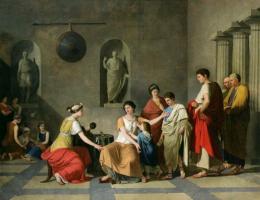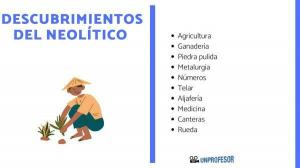Aristotle's MIMESIS - SHORT AND EASY Summary!
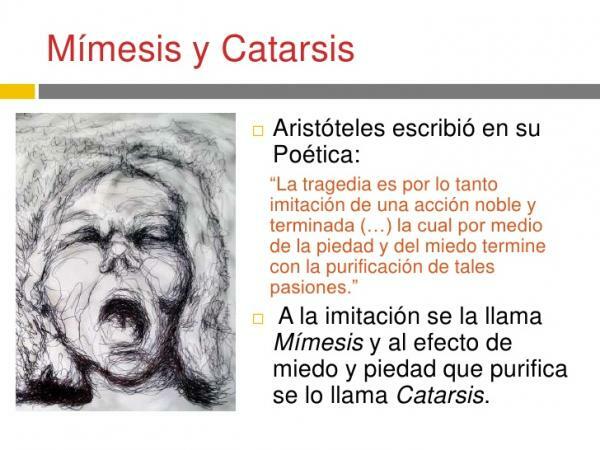
Image: Slideshare
In this lesson from a TEACHER we offer you a brief Summary Aristotle mimesis, which he develops in his work, The Poetics or On poetics (Περὶ Ποιητικῆς), who writes the stagirite in the 4th century BC. C., and consists of an aesthetic reflection through tragedy. In the words of Aristotle, the work is about “of poetic art in itself and of its forms, of the potential that each one of them possesses, and in what way the plots have to be composed so that the poetic composition is beautiful”. In addition, in the work, other considerations appear about history, poetry and the arts, language or about the mimesis.
Index
- Aristotle's Poetics and mimesis
- Aristotle's mimesis VS Plato's diegesis
- Art as Imitation in Aristotle
The Poetics of Aristotle and mimesis.
The Poetics is one of the esoteric works of Aristotle, which means that it was not published, and basically consisted of a series of notes aimed at teaching, a kind of guide for the teacher. Originally, the work consisted of two parts:
- First part: about the tragedy and the epic.
- Second part: on comedy and iambic poetry.
The second part of the book, dedicated to comedy, mysteriously disappears during the Middle Ages. The loss of the manuscript is the central theme of the work of Umberto Eco, The name of the rose. Thus, only the first part is preserved, and this is where Aristotle will develop his notion of mimesis.
“In the first book we have dealt with tragedy and how, by evoking pity and fear, it produces the purification of those feelings. As promised, we will now deal with comedy (as well as satire and mime) and how, by evoking the pleasure of the ridiculous, it achieves the purification of that passion. As to how worthy of consideration this passion is, we have already dealt with in the book on the soul, since man is — of all animals — the only one capable of laughing. So we will define the kinds of actions that comedy imitates, and then we will examine the ways in which comedy elicits laughter, which are facts and elocution.... “
(OR. Eco, The name of the rose, Barcelona, Lumen, 1982)
To understand Aristotle's concept of mimesis it is essential that we know that, for the philosopher, all arts are mimesis or imitation, and this is the basis of learning. Mimesis is something typical of the human being and most importantly, it is pleasant. This is why people like the arts in general. It is because of the pleasure of seeing what is imitated, because what is imitated can be perceived by the senses and by reason.
“Art is capable and worthy of occupying leisure and offering happiness ”, affirms Aristotle, and for the philosopher, happiness is the ultimate goal of the human being.
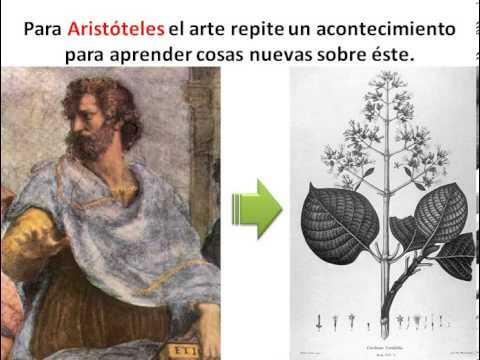
Image: Youtube
Aristotle's mimesis VS Plato's diegesis.
Aristotle rejects the platonic theory that mimesis is nothing more than a sensory appearance of external images that constitute a copy of the world of ideas. So that, Platoflees from imitation or mimesis, to adopt the story or lexis, which constitutes a narration of history or diegesis, that dispenses with all imitation, to use only the word.
In the diegesis The work of art does not constitute a representation of reality, but exists through the author's own grammar, which Through literary creation, only with words, he voluntarily expresses his most intimate feelings and desires, his world inside. Not so mimesis.
It must be borne in mind that in Classical Greece, both lyric and science or history were written in verse, and therefore, there was some confusion between poetry and history, which tended to identify themselves. Aristotle will be the first to point out the difference between the two.
"It is not up to the poet to say what has happened, but what could happen, that is, what is possible according to verisimilitude or necessity. Indeed, the historian and the poet do not differ by saying things in verse or prose (...) the difference is that one says what has happened, and the other, what could happen. That is why poetry is also more philosophical and elevated than history, since poetry says rather the general and history, the particular.".
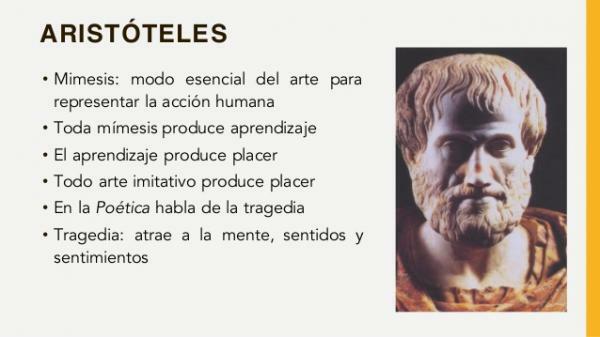
Image: Slideshare
Art as Imitation in Aristotle.
Aristotle's mimesis takes place because the thinker affirms "all (the arts) come together to be imitations. But they differ from each other by three things: by imitating with different means, or by imitating different objects, or by imitating them differently.".
The philosopher explains in his work that there are different means of imitation or mimesis, which are rhythm, language and harmony, and this is what will make the difference between the arts, which sometimes use a single medium and sometimes combine them with each other.
For example, the music employ rhythm and harmony; the dance, just use the rhythm; the literature (which at that time was not known by that name), uses language. But some arts use the 3 means of imitation, and these are: dithyramb (lyrical compositions in honor of Dionysus), tragedy and comedy.
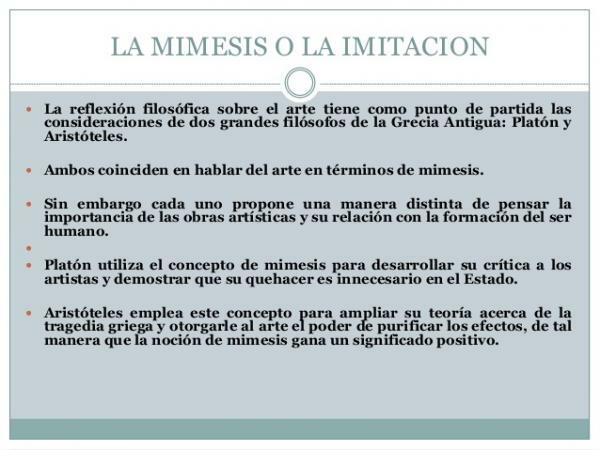
Image: Slideshare
If you want to read more articles similar to Aristotle's Mimesis - Summary, we recommend that you enter our category of Philosophy.
Bibliography
- Aristotle. ThePoetics. Ed. Alliance. 2013
- Eco, U. The name of the rose. Ed. Lumen. 1982

